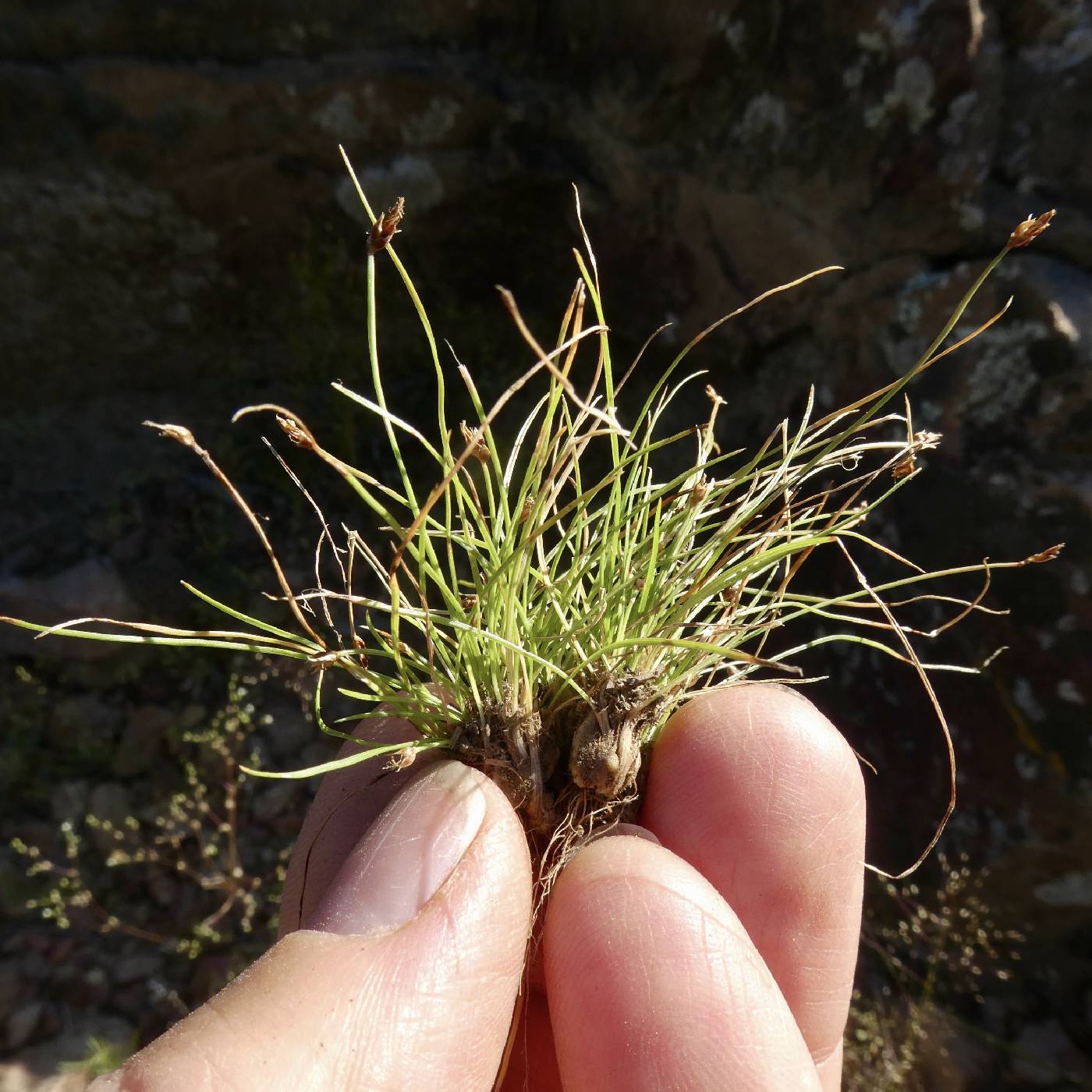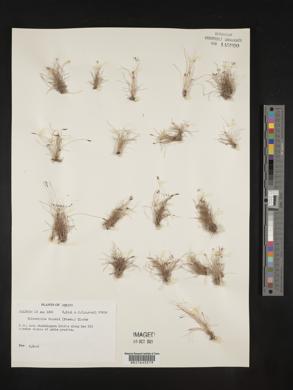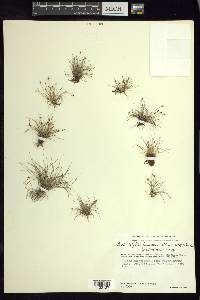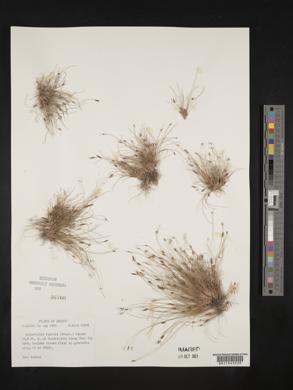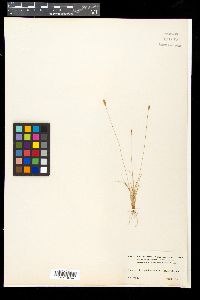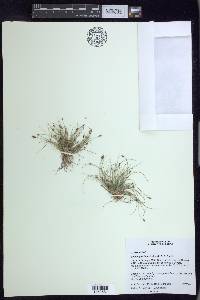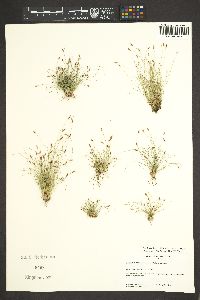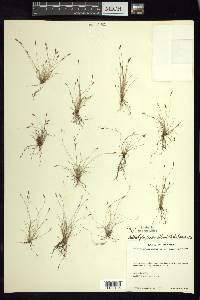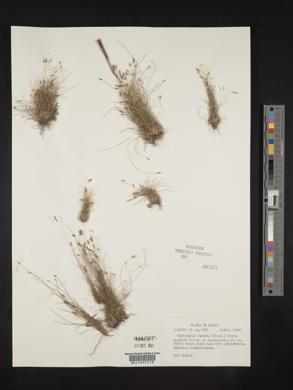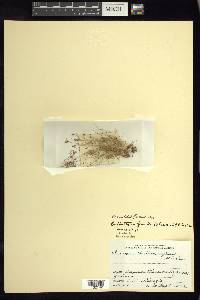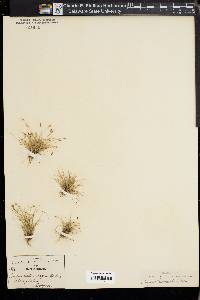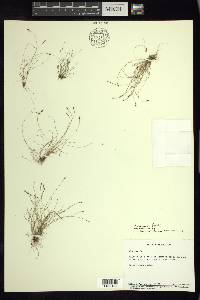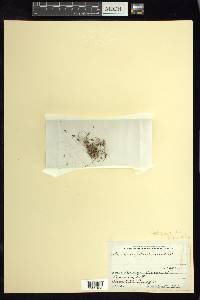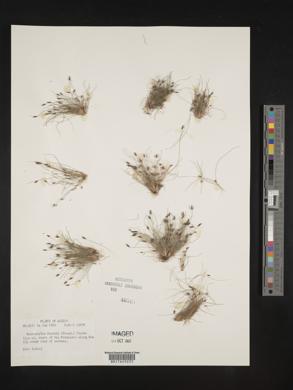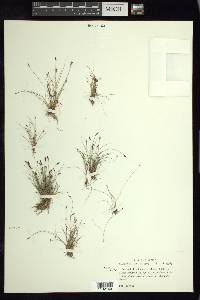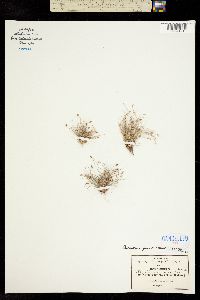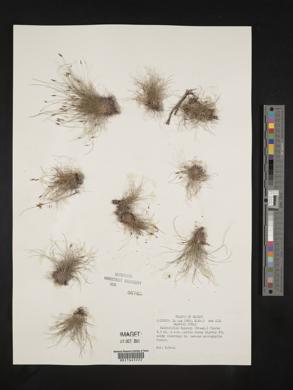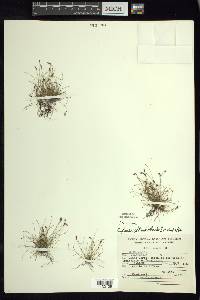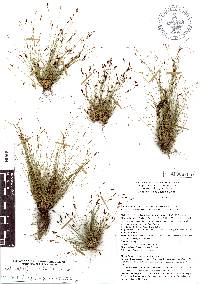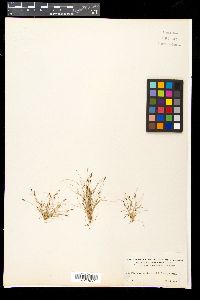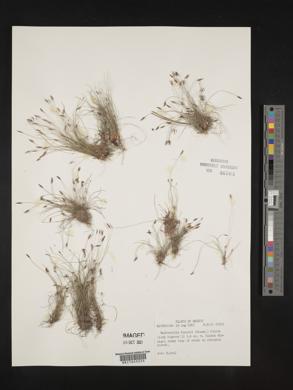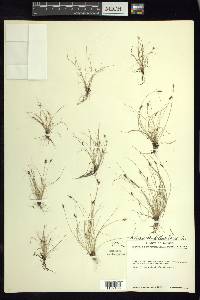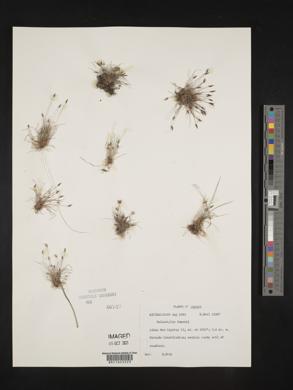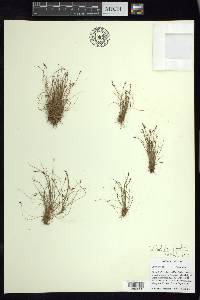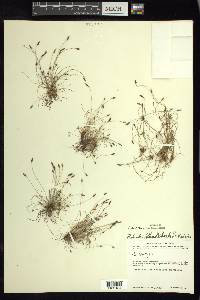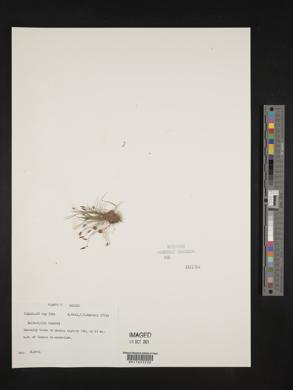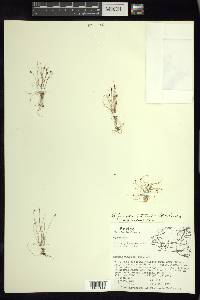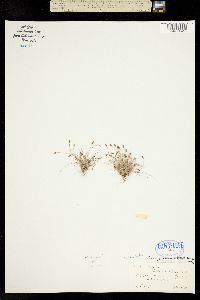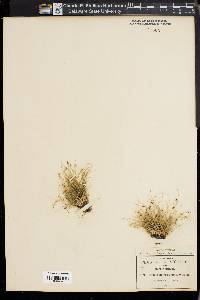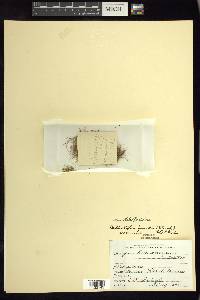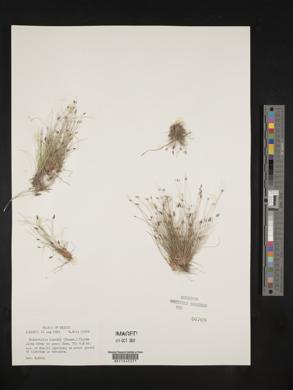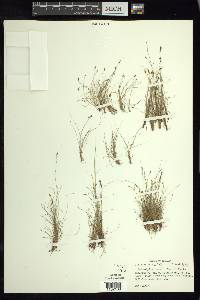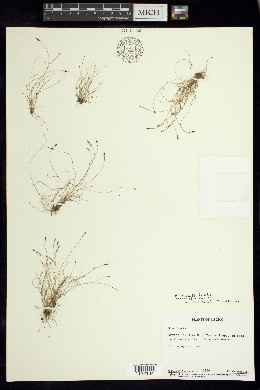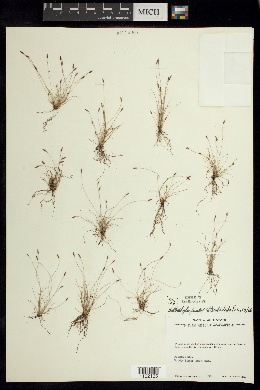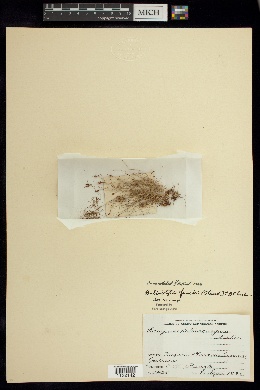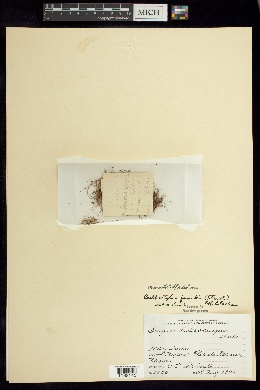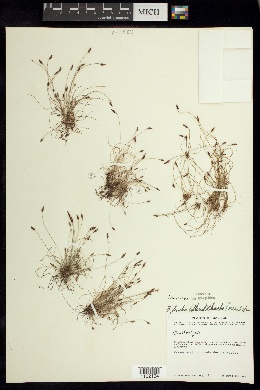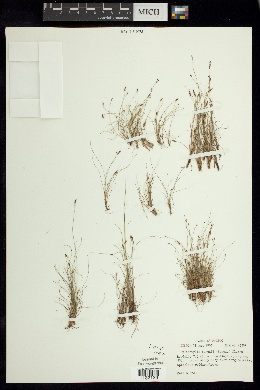
|
|
|
|
Family: Cyperaceae
Funck's Hair Sedge, more...Funck's hairsedge, Funck hairsedge
[Bulbostylis tenuispicata (Boeckeler) Barros, moreIsolepis funckii Steud., Scirpus heterocarpus S.Watson, Stenophyllus funckii (Steudel) Britton] |
Herbs, annual, densely cespitose, scapose, delicate, low. Culms 5-10(-15) cm. Leaves 1/2 as long as to slightly exceeding scapes; sheaths stramineous to reddish, dilated, strongly ribbed; blades filiform, 0.5 mm wide, flat or involute, glabrous, margins distantly scabrid. Inflorescences: spikelets of 2 sorts, one sterile, 1(-2) atop filiform scapes or short-stalked to sessile at plant base, red-brown with green midribs, lanceoloid to lance-cylindric, 5-7 mm; the other fertile, the florets developing in sheath axils at culm base; leafy involucral bracts 1, appearing as extension of culm, or absent. Spikelets: scales of sterile spikelets lanciform, keeled, midrib excurrent at mucro; fertile scales saccate, strongly ribbed, distended by achenes. Flowers: stamens 2; anthers narrowly oblong, 0.5 mm. Achenes pale, lustrous, broadly trigonous-obovoid to subglobose, the fertile 1.5 mm, the sterile 1 mm, faces slightly convex, rugulose, papillose; tubercle a small depressed or conic button. 2n = 20. Fruiting all year. Sandy disturbed sites such as roadbanks, fields, meadows, town lots, and pastures, sometimes weedy in open sandy land; 0-3000 m; Ariz., N.Mex.; Mexico; Central America; South America. Bulbostylis funckii is the only heterocarpous species in Bulbostylis, the achenes of proximal spikelets being nearly twice as large and more tumid than those of aerial spikelets.
FNA 2002, Kearney and Peebles 1969 Common Name: Funck's hairsedge Duration: Annual Nativity: Native Lifeform: Graminoid General: Annual herbs, densely cespitose, delicate and low, with stems 5-10 cm. Vegetative: Leaves half as long to slightly exceeding scapes, sheaths stramineous to reddish, dilated, strongly ribbed; blades filiform, 0.5 mm wide, flat or involute, glabrous, margins distantly scabrid. Inflorescence: Spikelets of 2 types, one sterile, 1 atop filiform scapes or short-stalked to sessile at plant base, red-brown with green midribs, lance shaped to lance-cylindric, 5-7 mm, the other fertile, florets developing in sheath axils at stem base; 1 leafy involucral bract, looks like an extension of stem; spikelets of sterile spikelets lanciform, keeled, midrib excurrent at mucro; fertile scales saccate, strongly ribbed, distended by achenes; 2 stamens, anthers narrowly oblong, 0.5 mm; achenes pale, lustrous, broadly three sided-obovoid to subglobose. Ecology: Found on moist sandy soils, from 5,000-7,500 ft (1524-2286 m); flowers year round. Notes: This is the only species in the genus with two different spikelets, with the lower spikelets twice as large as the aerial ones. Bulbostylis is so little, you-ve got to be looking for it to see it. Ethnobotany: Unknown Etymology: Bulbostylis means having a bulb-like style, while funckii is named for Luxembourgen naturalist Nicolas Funck (1816-1896). Synonyms: Isolepis funckii Editor: SBuckley, 2010 |
This project was made possible in part by the Institute of Museum and Library Services [MG-70-19-0057-19].
Powered by Symbiota

